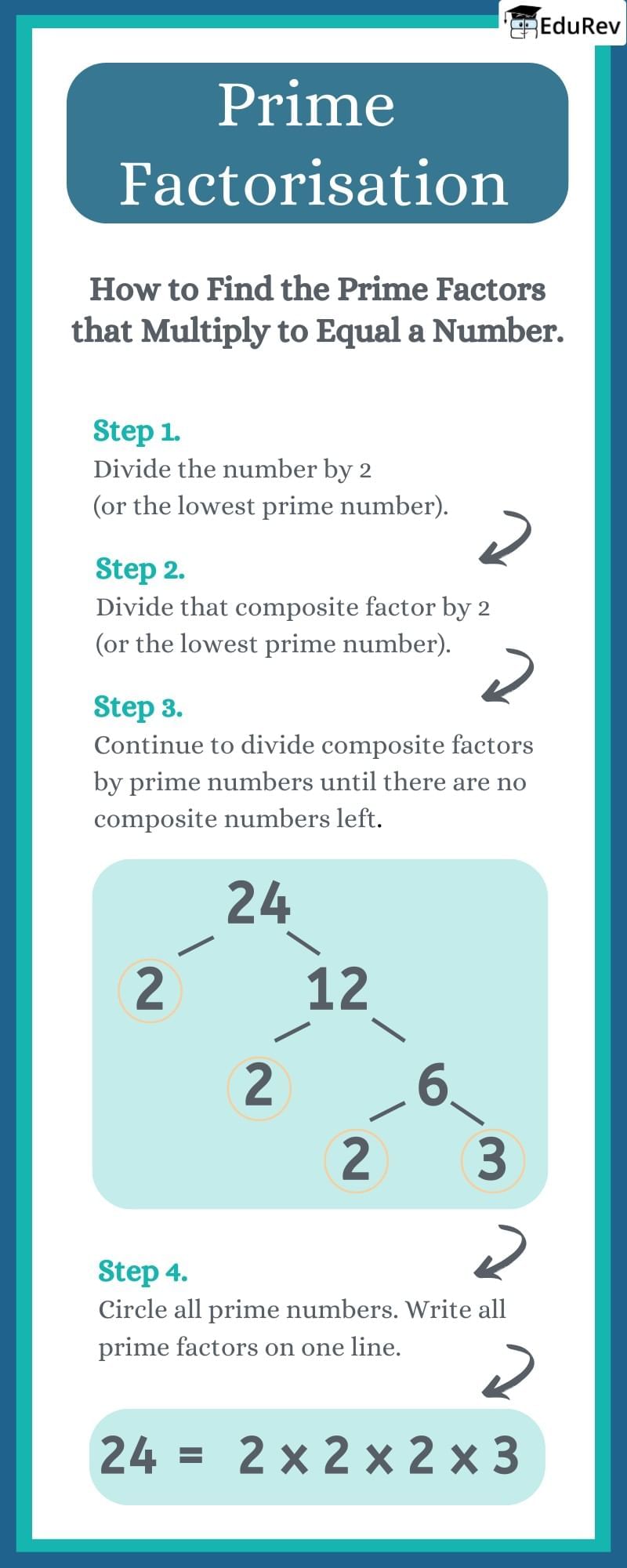Class 6 Exam > Class 6 Notes > Maths Olympiad Class 6 > Learning Poster: Prime Factorisation
Learning Poster: Prime Factorisation | Maths Olympiad Class 6 PDF Download

The document Learning Poster: Prime Factorisation | Maths Olympiad Class 6 is a part of the Class 6 Course Maths Olympiad Class 6.
All you need of Class 6 at this link: Class 6
|
30 videos|120 docs|59 tests
|
FAQs on Learning Poster: Prime Factorisation - Maths Olympiad Class 6
| 1. What is prime factorization and why is it important? |  |
Ans.Prime factorization is the process of expressing a number as the product of its prime factors. A prime number is a natural number greater than 1 that has no positive divisors other than 1 and itself. Prime factorization is important because it helps simplify fractions, find the greatest common divisor (GCD), and the least common multiple (LCM) of numbers. Understanding prime factorization also lays the foundation for more advanced mathematical concepts.
| 2. How do you find the prime factors of a number? |  |
Ans.To find the prime factors of a number, you can use the following method: Start by dividing the number by the smallest prime number, which is 2. If the number is even, divide it by 2 until it is no longer divisible. If it is odd, move to the next smallest prime number (3, 5, 7, etc.) and continue the process. Record each prime number you used to divide. Repeat until you cannot divide anymore, and the resulting quotient will be 1. The prime factors are the prime numbers you recorded during the process.
| 3. Can all numbers be expressed as a product of prime factors? |  |
Ans.Yes, all natural numbers greater than 1 can be expressed as a product of prime factors. This concept is known as the Fundamental Theorem of Arithmetic, which states that every integer greater than 1 either is a prime number or can be uniquely factored into prime numbers, regardless of the order of the factors. For example, the number 28 can be expressed as 2 x 2 x 7 (or 2² x 7).
| 4. What is the difference between prime and composite numbers? |  |
Ans.Prime numbers are natural numbers greater than 1 that have exactly two distinct positive divisors: 1 and the number itself. In contrast, composite numbers are natural numbers greater than 1 that have more than two positive divisors. For example, 5 is a prime number because it can only be divided by 1 and 5, while 6 is a composite number because it can be divided by 1, 2, 3, and 6.
| 5. How is prime factorization used in real life? |  |
Ans.Prime factorization has several practical applications in real life. It is used in computer science for algorithms related to encryption and coding. It helps in simplifying fractions in cooking or budgeting by finding common denominators. Additionally, prime factorization is essential in areas such as cryptography, where secure communications rely on the difficulty of factoring large numbers into their prime components, thus ensuring data protection.
Related Searches
















